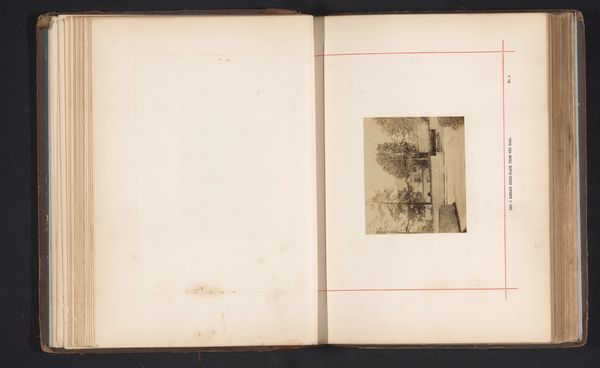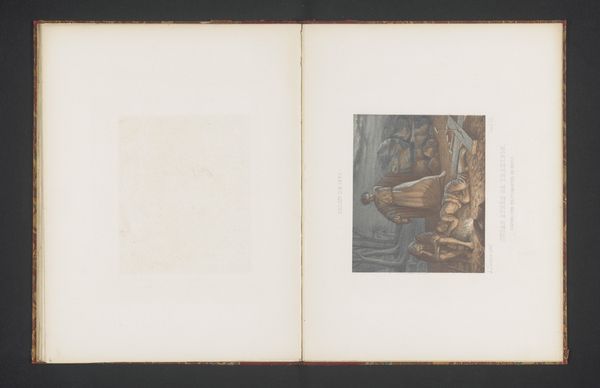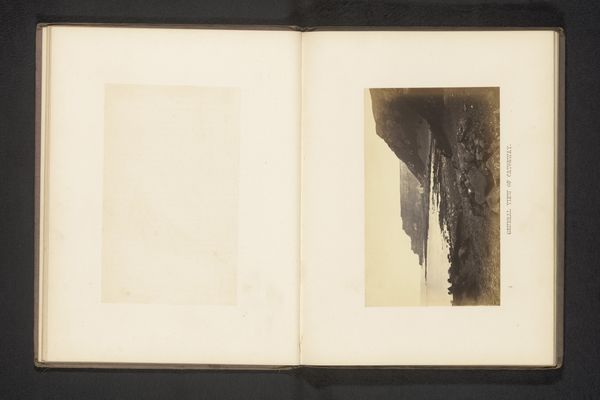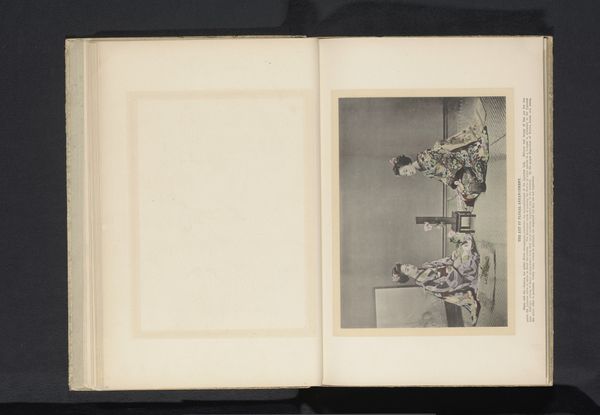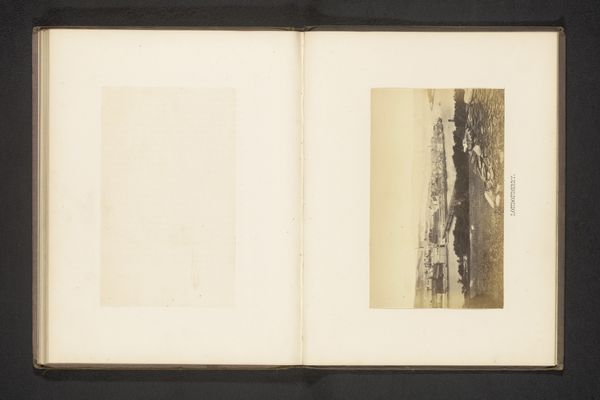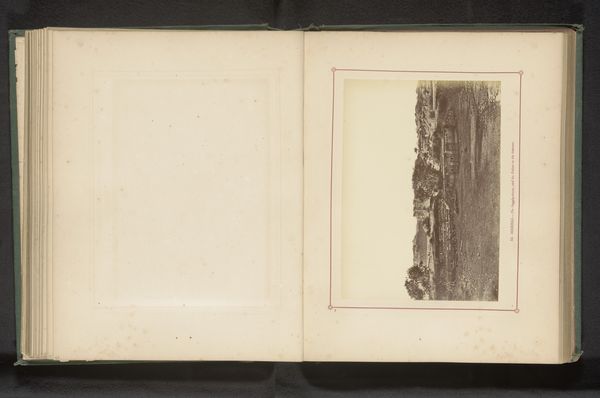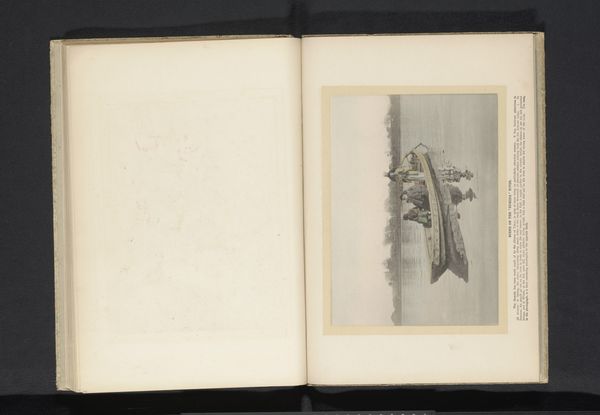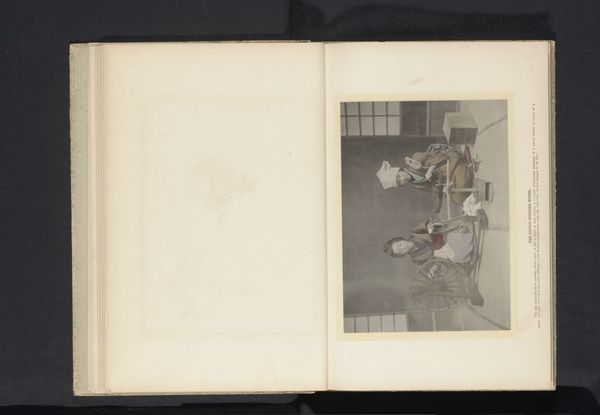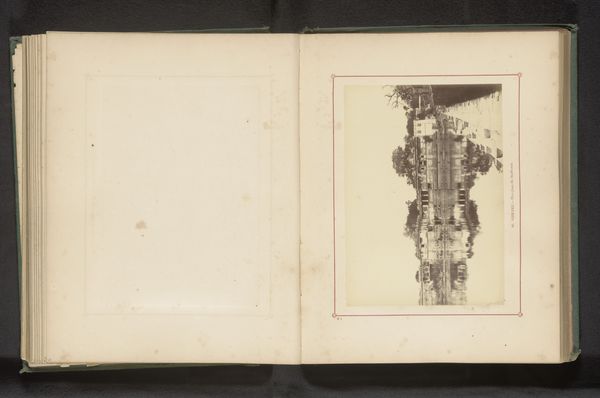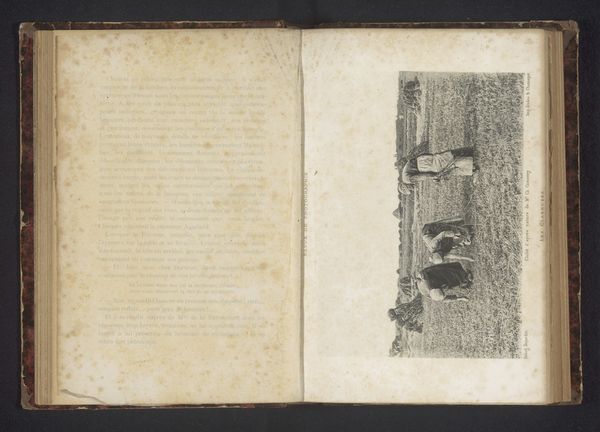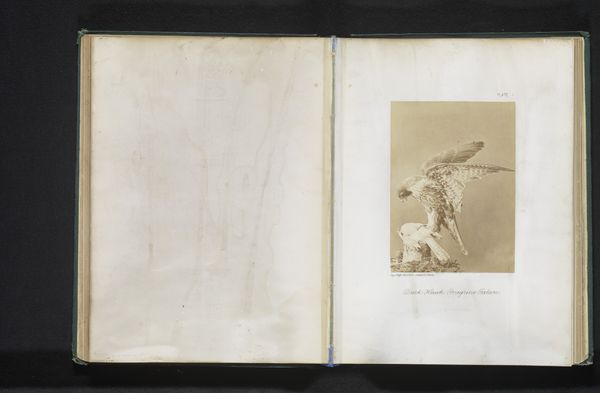
print, photography
#
portrait
#
aged paper
#
homemade paper
#
paperlike
# print
#
sketch book
#
landscape
#
paper texture
#
photography
#
personal sketchbook
#
folded paper
#
orientalism
#
sketchbook drawing
#
sketchbook art
#
design on paper
Dimensions: height 168 mm, width 231 mm
Copyright: Rijks Museum: Open Domain
Editor: This is an intriguing image, seemingly a print of a photograph, from before 1900. It's titled "Vrouw in een draagstoel, gedragen door twee mannen" and, from what I can see, shows a woman being carried in a sedan chair by two men. It's part of a larger composition, possibly a page from a sketchbook. I find myself immediately considering the power dynamics at play. How do you interpret this work? Curator: It's a loaded image, isn't it? Considering the likely context of its creation – probably during a period of colonialism – the portrayal of this scene can be quite problematic. The woman in the chair is positioned as someone of status, but also, in a way, passive and dependent. The two men bearing her weight, literally and figuratively, represent the often-exploited labor and service inherent in colonial power structures. It invites us to reflect on whose gaze this image was created for and what narratives it perpetuates. Does this depiction sit uncomfortably with you? Editor: Yes, it does. I see the issue of the "gaze" clearly. The photograph, presented as a mere recording, might actually serve to normalize and even romanticize a system of inequality and potentially racial difference. Do you think the artist/photographer was necessarily conscious of these issues, or were they simply products of their time? Curator: That's always the crucial, difficult question, isn't it? It's highly probable that they operated within the accepted norms and beliefs of their era. However, our responsibility now is to critically analyze the image, unpack its underlying assumptions, and discuss how it continues to resonate, and perhaps disturb, today. For instance, the implied passivity and power structures are visually conveyed but may subtly perpetuate historical exploitation and reinforce societal inequality. We must be conscious about the artist's subjectivity and the legacy it bears on the subjects that are illustrated here. Editor: That's a really important distinction. It's about understanding the context and being aware of the potential for historical images to perpetuate harmful ideologies. It makes me realize how much context matters when interpreting art. Curator: Exactly. And that's where art history intersects with the urgent, ongoing conversations about identity, representation, and social justice. By acknowledging the complicated history embedded within this single image, we can foster a deeper understanding of our present.
Comments
No comments
Be the first to comment and join the conversation on the ultimate creative platform.

